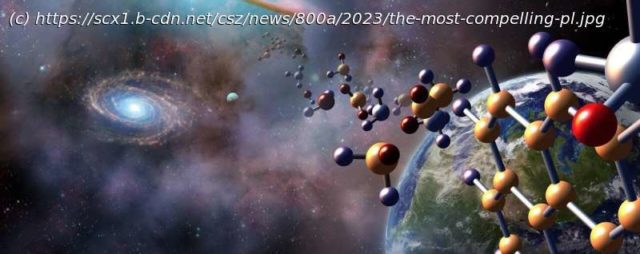In the past two and a half years, two next-generation telescopes have been sent to space: NASA’s James Webb Space Telescope (JWST) and the ESA’s Euclid Observatory. Before the decade is over, they will be joined by NASA’s Nancy Grace Roman Space Telescope (RST), Spectro-Photometer for the History of the Universe, Epoch of Reionization, and Ices Explorer (SPHEREx), and the ESA’s PLAnetary Transits and Oscillations of stars (PLATO) and ARIEL telescopes.
In the past two and a half years, two next-generation telescopes have been sent to space: NASA’s James Webb Space Telescope (JWST) and the ESA’s Euclid Observatory. Before the decade is over, they will be joined by NASA’s Nancy Grace Roman Space Telescope (RST), Spectro-Photometer for the History of the Universe, Epoch of Reionization, and Ices Explorer (SPHEREx), and the ESA’s PLAnetary Transits and Oscillations of stars (PLATO) and ARIEL telescopes.
These observatories will rely on advanced optics and instruments to aid in the search and characterization of exoplanets with the ultimate goal of finding habitable planets.
Along with still operational missions, these observatories will gather massive volumes of high-resolution spectroscopic data.
Sorting through this data will require cutting-edge machine-learning techniques to look for indications of life and biological processes (aka. biosignatures).
In a recent paper, a team of scientists from the Institute for Fundamental Theory at the University of Florida (UF-IFL) recommended that future surveys use machine learning to look for anomalies in the spectra, which could reveal unusual chemical signatures and unknown biosignatures.
The study was conducted by a mix of physicists and machine learning experts, including Associate Professor Katia Matcheva, physics graduate student Roy T. Forestano, Professor Konstantin T. Matchev, and Ph.D. student Eyup B. Unlu.
A preprint of their paper, « Searching for Novel Chemistry in Exoplanetary Atmospheres using Machine Learning for Anomaly Detection, » appeared online on the pre-print server arXiv and is being reviewed for publication in the Astrophysical Journal. As they explained, the central premise of their paper is that what constitutes « life » remains an open question for scientists, and it would be advantageous to expand the scope of our search.
First off, it is important to acknowledge how far the study of exoplanets has come in recent decades. The first confirmed detection did not take place until 1992, which consisted of two Super-Earths (Poltergeist and Phobitor) observed around a pulsar (PSR B1257+12, aka. Lich) located 2,300 light-years from Earth. While scientists firmly believed that most stars had their own system of planets, they had no incontrovertible proof before this discovery. And until the Kepler Space Telescope launched in 2009, exoplanet discoveries were being added at a rate of a few per year.
Since then, a total of 5,496 exoplanets have been confirmed in 4,096 systems, with another 9,820 candidates awaiting confirmation. In recent years, the process has shifted from the process of discovery towards characterization, where improved instruments and methods have enabled astronomers to analyze exoplanet atmospheres directly to measure their potential habitability. As Prof. Matcheva explained to Universe Today via email:
« The instruments are getting better and better: better spectral resolution, exceptional signal-to-noise level, wider wavelength coverage.






